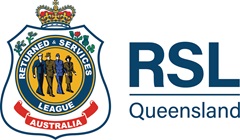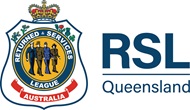
On the path of the ANZACs
10 July 2024- ANZACspirit
From WWI battlefields to an unforgettable ANZAC Day Dawn Service, RAAF veteran-turned-teacher Michelle reflects on her “trip of a lifetime”.
Exploring and commemorating ANZAC history where it happened was the “pinnacle” of Michelle Pipe’s teaching career.
As part of the 2024 Premier’s Anzac Prize – which is presented by the Queensland Department of Education in partnership with RSL Queensland – the third-generation veteran co-chaperoned eight students on an extraordinary tour from London to the Western Front, visiting key landmarks from Australia’s military history.
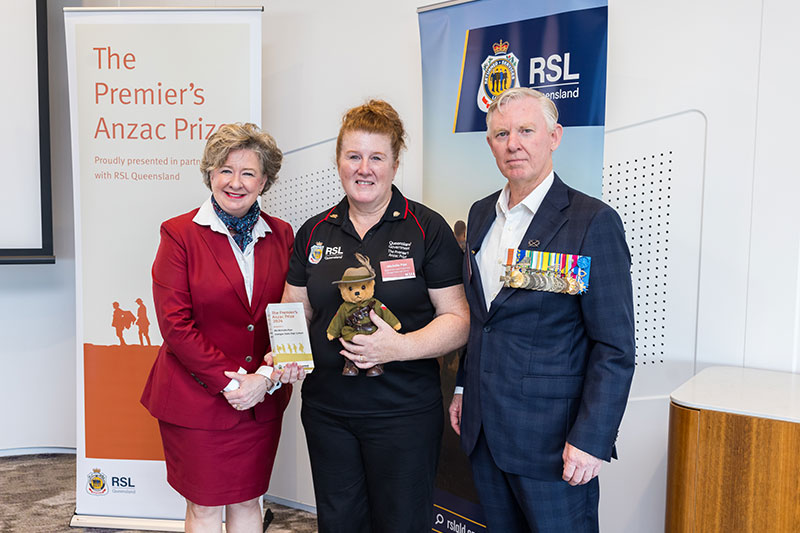
Michelle (centre) with Assistant Minister for Education Corrine McMillan and RSL Queensland State President Major General Stephen Day DSC AM.
Below, Michelle’s travel diary recounts the highlights, from retracing the ANZACs’ footsteps, to finally farewelling long-lost family.
London to Paris
London stole my heart and blew my mind! Such a sense of familiarity, although I’d never visited before. The history and landmarks were everywhere you turned. We enjoyed a fabulous river cruise taking in the London Eye, London Bridge, Tower of London and more.
Our visit to the ANZAC war graves at St Mary’s Churchyard Cemetery in Harefield was very special. The history of this beautifully preserved 11th century church was breathtaking. The cemetery is equally stunning and well cared for, with thoughtfully planted gardens creating a peaceful space for remembrance.
Paris - what a beautiful city. I didn’t know where to look first and really enjoyed cruising the Seine to take in all the famous sights, from the Eiffel Tower to Notre Dame. We spent four wonderful hours at the breathtaking Palace of Versailles with all its gold, grandeur and spectacular gardens.
Fromelles
Heading north from Paris, we crossed the Somme River and into the battlefields of WWI. Fromelles was our first focus on the Western Front, and it had an immediate impact.
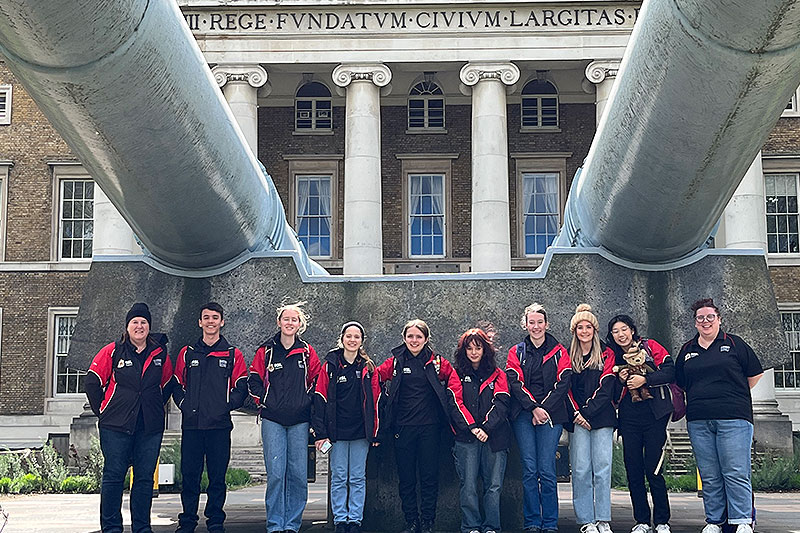
Michelle and her fellow 2024 Premier's Anzac Prize recipients in Europe
The Battle of Fromelles was horrific – as violent as war can be. Historians describe it as the worst 24 hours in Australian military history, with 5,533 Australian casualties. Standing on the battlefield, you can see how flat the terrain is, how close the Australian and German lines were, and the ghastly mud of the fields where the ANZACs were torn apart. You wonder how any of them survived.
Most soldiers were killed in No Man's Land and weren’t retrieved until after the armistice, more than two years later. They now rest side by side together in two large grave sites, their names etched in a stone memorial wall surrounding them, at VC Corner Cemetery – the only one on the Western Front dedicated entirely to the ANZACs.
Belgium
Such a beautiful country, with the friendliest people.
Ypres was everything I imagined. It’s amazing how the town’s medieval charm has been restored considering it was destroyed during WWI. Not one building in Ypres is more than 100 years old, yet it felt like we were transported back centuries. The Menin Gate was closed for renovations, but I was deeply honoured to join two of our students in laying a wreath in the Last Post ceremony.
Ypres Salient battlefields
Our visit to Polygon Wood and Passchendaele will live in my memory forever. Across these open fields are many cemeteries where the fallen rest in peace. However, many more soldiers have no known grave.
The locals talk about finding bodies as such a regular occurrence; turning the dirt over in any paddock, they always expect to find something. Generally, it's uniforms, weapons or ammunition. A body part, bones, and sometimes complete skeletons will appear. Then the process of formal exhumation and identification begins. The body is buried with ceremony and dignity, but most often as an unknown soldier.
At Buttes New British Cemetery, we placed a wreath at the 5th Division Memorial. Then it was my turn to share a very personal moment about my great-great-uncle, William Stubbings, who was killed in action nearby on 25 September 1917.
William has no known grave; eyewitness reports make it clear that there was nothing left of him to recover. It’s deeply troubling to think of such a harrowing death for this young man, just 24 years old. We were shown a gravestone that marks the remains of soldiers who can never be identified. I placed William’s photo and a cross, poppy and Australian flag there in his memory. May he rest in peace and know how much his family loved and still love him.
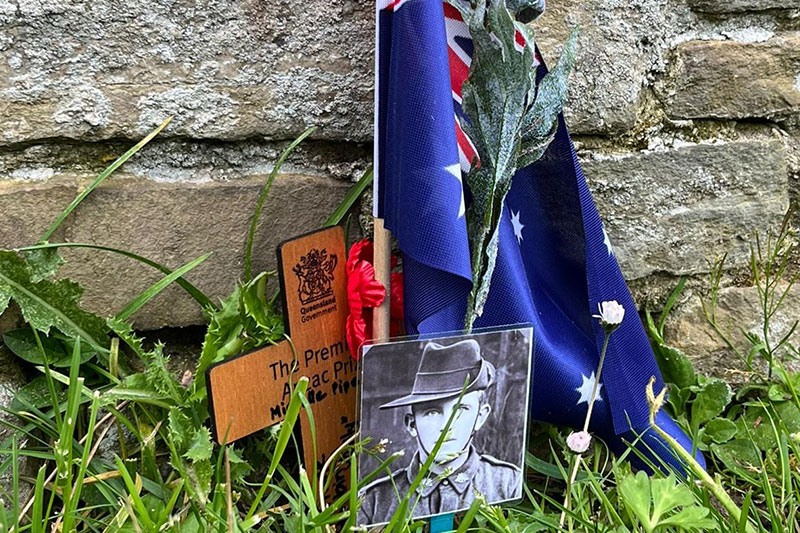
The trip gave Michelle a chance to pay her respects to family members who served in WWI
We spent the afternoon exploring Polygon Wood, retracing the steps of our soldiers. It was chilling and fascinating, with the remnants of bunkers and trenches silently marking the way.
Tyne Cot Cemetery, with row upon row of white crosses stretching across the ridge, left me speechless. It’s an extraordinary sight and gave us a strong sense of the devastating loss of men there.
Passchendaele Museum offered amazing displays and an incredible immersive experience walking through reconstructed trench systems.
Langemark Cemetery
Langemark Cemetery is so sombre, if not distressing. Langemark was the first place they ever used gas as a war weapon, and a dark, tomb-like shelter provides information about this.
Some 44,000 German soldiers are buried there, many in mass graves; some 24,917 lie in the Comrades Grave alone. Elsewhere, black headstones bear the names of those buried beneath – at least eight for every plot. Mostly young men, they answered the Kaiser's call and, like our ANZACs, signed up to serve their country.
I felt very uneasy at Langemark, and no wonder. As we moved through, our tour guide Nigel revealed that we were standing where Hitler did in 1940. By all accounts, he was very impressed with the place. A chilling moment to reflect on.
Messines
Messines is a quiet town south of Ypres that was strategically very important to both sides in the war. I’ve imagined this place since I was a teenager, and may still have the letter from my grandfather telling me about his Uncle Alfred.
When WWI broke out, Alfred’s nephew Thomas joined the New Zealand Regiment, serving in Gallipoli and the Western Front before going missing in action. Alfred’s brother, 54-year-old Thomas Sr, lied about his age to enlist. At 44, Alfred was still young enough to enlist, and the two brothers set off for war to search for Thomas Jr.
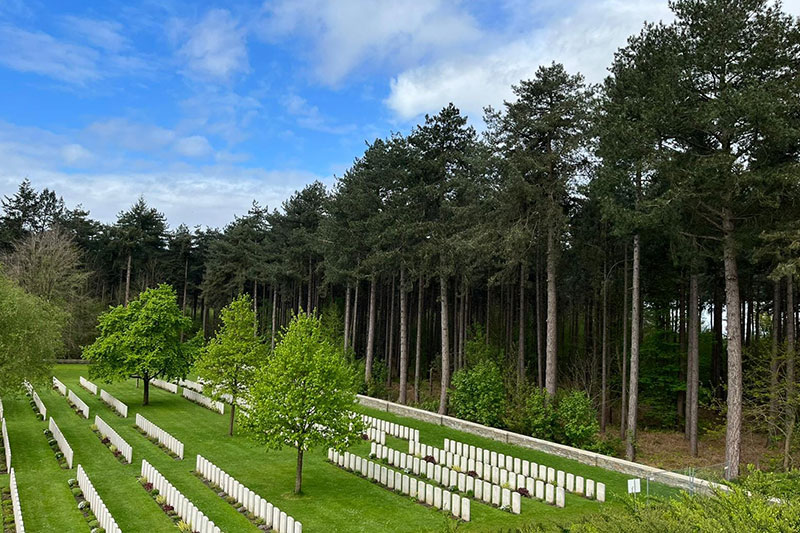
Polygon Wood Cemetery
The story culminates in the Battle of Messines. Alfred's battalion would have moved through the New Zealand line where Thomas Jr should have been, but we don’t know whether they found each other. Thomas Sr and Thomas Jr eventually reunited, returning to New Zealand in 1919. Alfred, sadly, was killed in action on 10 June 1917.
My research shows he fell before his battalion crossed the Blauwepoortbeek (Blue Gate Brook), which runs alongside Cabin Hill Cemetery. I placed a small memorial for him within the cemetery wall. My family has never forgotten what Alfred endured for his country. I hope he somehow knew that his nephew and brother would make it home safely.
Australian National Memorial
The biggest highlight of our trip was the ANZAC Day Dawn Service in Villers-Bretonneux, which I watch on TV every year. Long anticipated by all of us, it was at once all too surreal and real. Seeing the Australian National Memorial all lit up in the dark was gobsmacking and so special.
An exceptional pre-service program told the story of selected diggers and battles. I had goosebumps watching the images float before me. An orchestra played and a superb vocalist sang a few soldier songs from the time. The students were mesmerised, reinforcing to me why we were there: to ensure the traditions of remembrance are passed on.
The service was utterly precise; I felt like my breathing might interrupt the whole thing. Our students laid a wreath in the public invitation, and I feel so honoured to have been there with them.
The Somme battlefields
One after another, those famous battlefield names – Bullecourt, Pozieres, Mouquet Farm, Villers-Bretonneux, Thiepval, Le Hamel, Mont St Quentin, Peronne – unfolded before me. Walking around the villages and battlefields of the Somme, I never felt prouder and more humbled to be Australian.
Thiepval British Memorial was stunning – towering over the landscape and incredibly impressive up close. From this vantage point, it’s extraordinary to take in the whole view of where the Australians fought.
Battlefield cemeteries
One of the most beautiful Commonwealth War Cemeteries that we visited was Courcelette British Cemetery in France. Walking among the gravestones, surrounded by green and yellow fields, I felt a profound peace I didn't realise I needed.
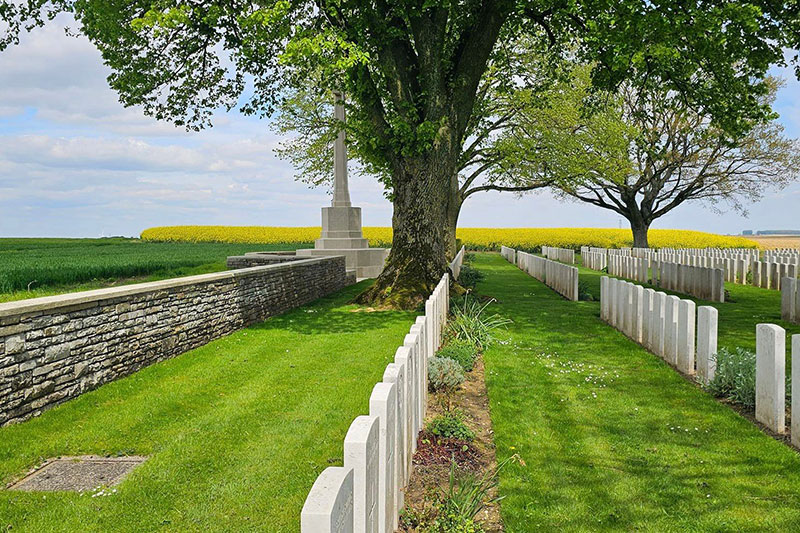
Courcelette British Cemetery
It reassured me that I needn’t worry about the tradition of remembrance fading away; these graves stand as powerful reminders of our pledge to always honour and remember our soldiers.
Lessons for the future
More than ever, I’m convinced how important hands-on experience is in changing students’ learning of history. This tour has been a life-changing, career-defining experience. I look forward to returning to share this amazing part of the world, and Australia’s history, with a new group of eager students.
Learn more
The annual Premier’s Anzac Prize is open to Queensland high school students and teachers.
To learn more and find out how you can apply, visit rslqld.org/get-involved/premiers-anzac-prize.
Related News
Loading
